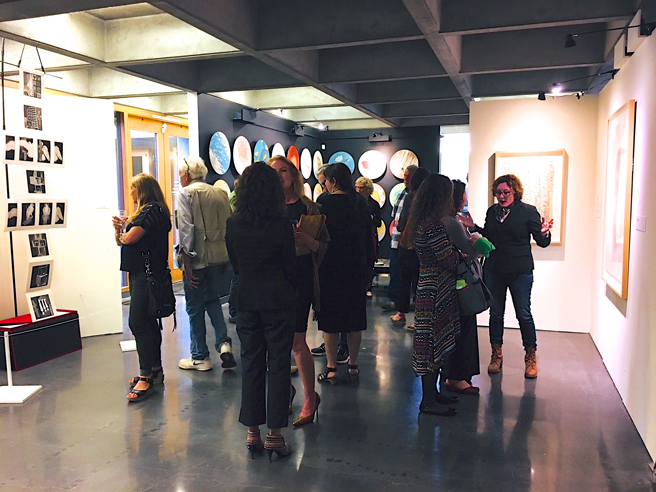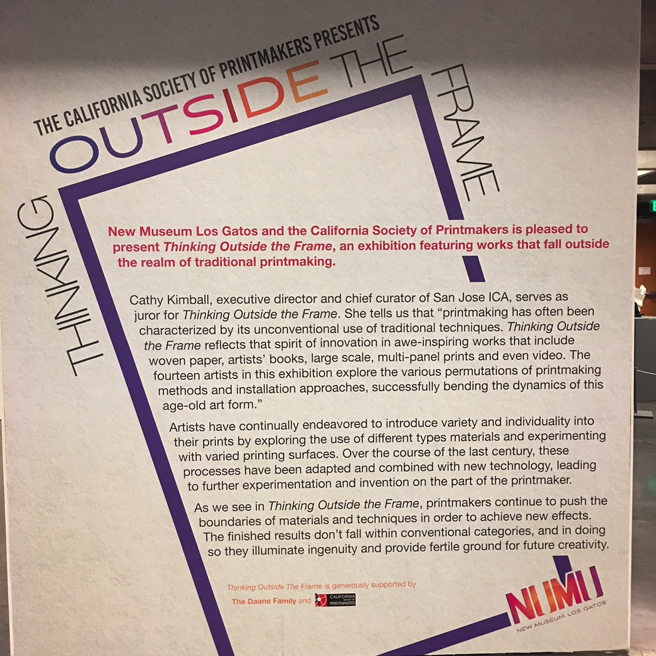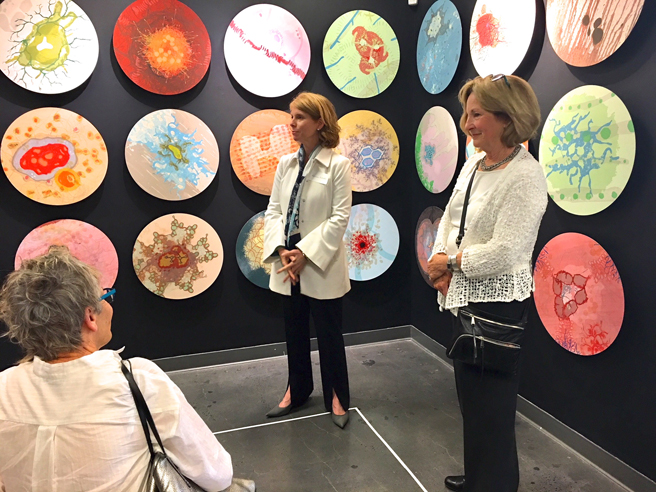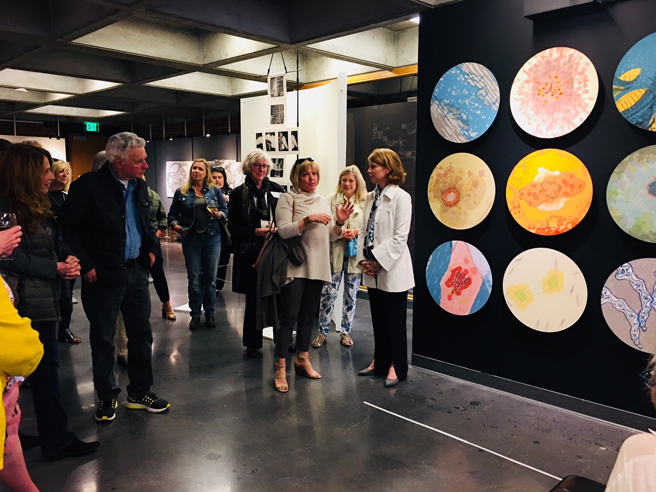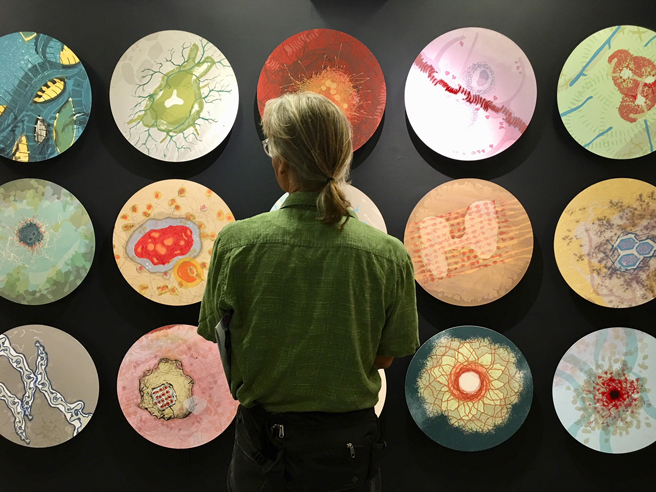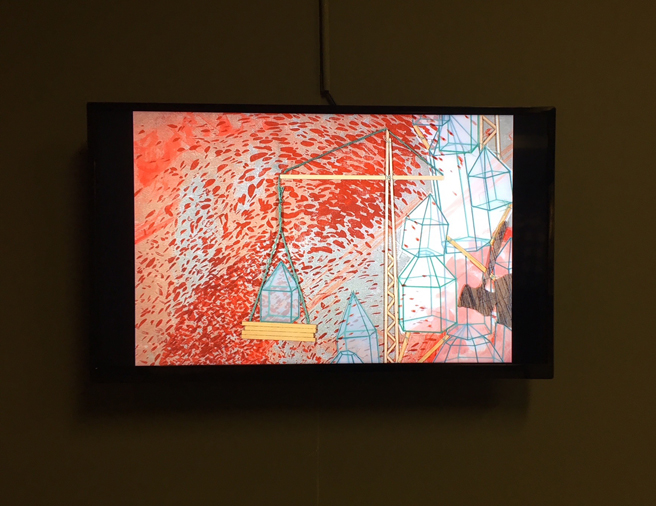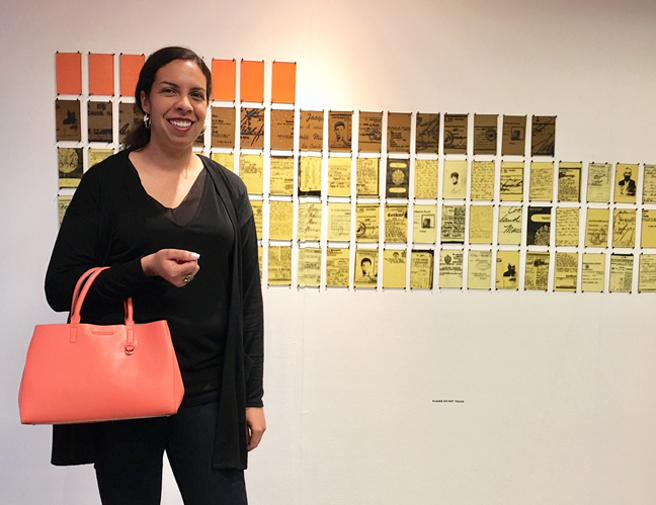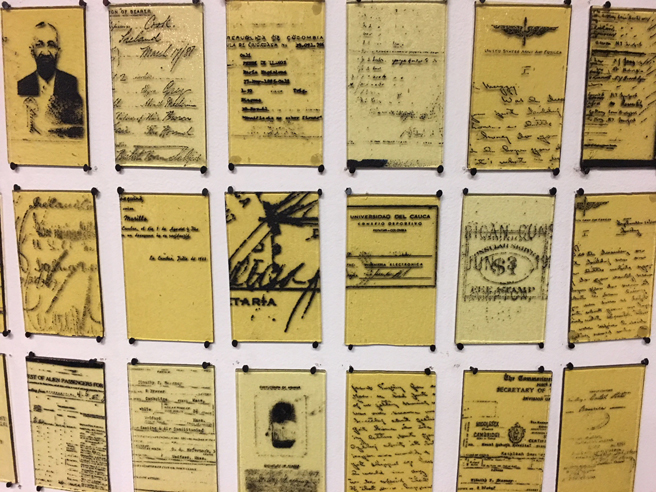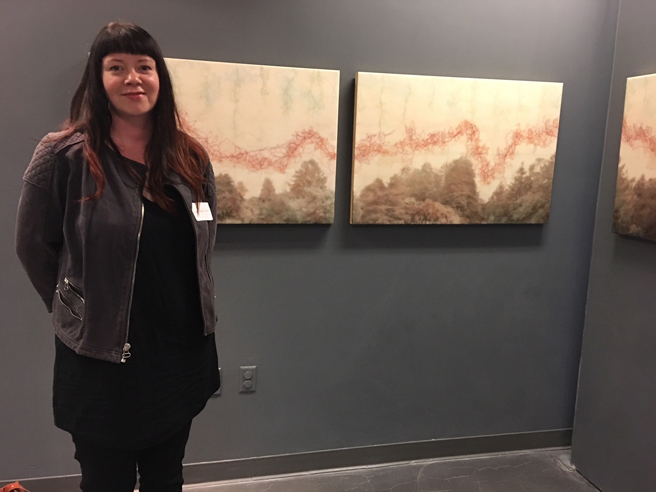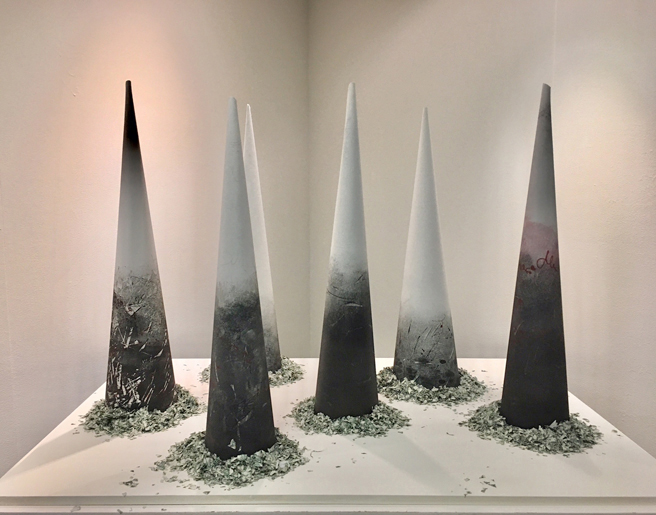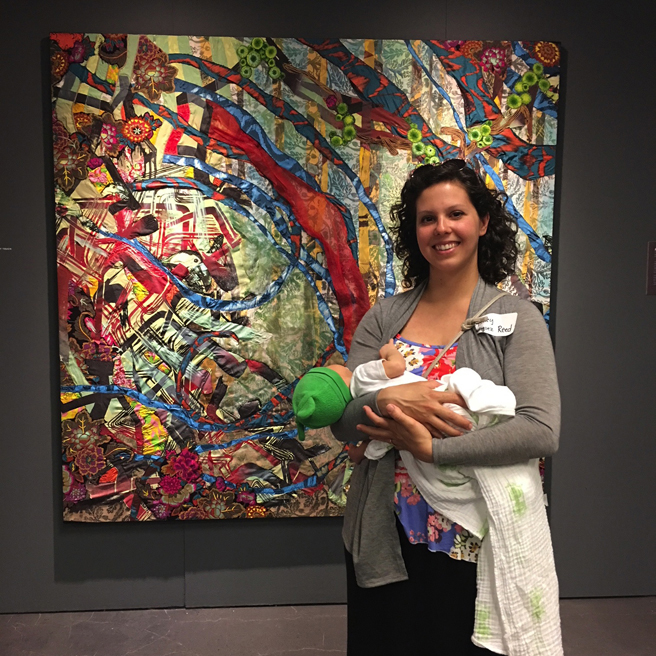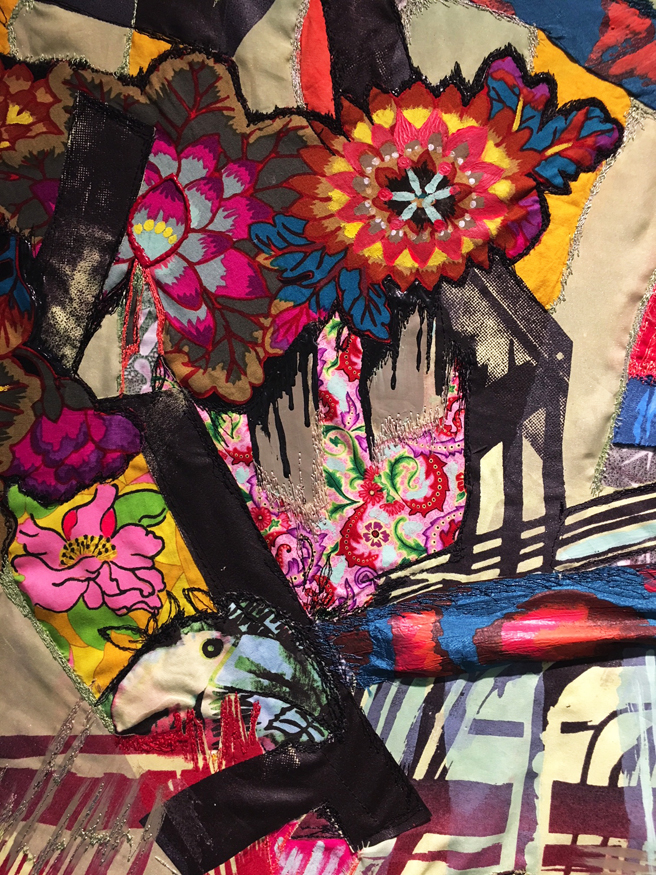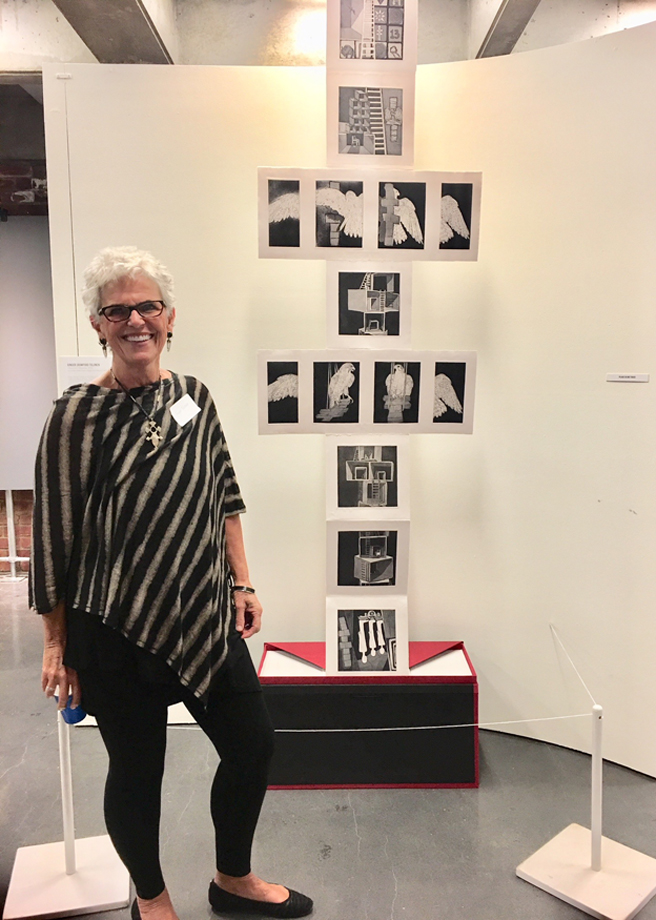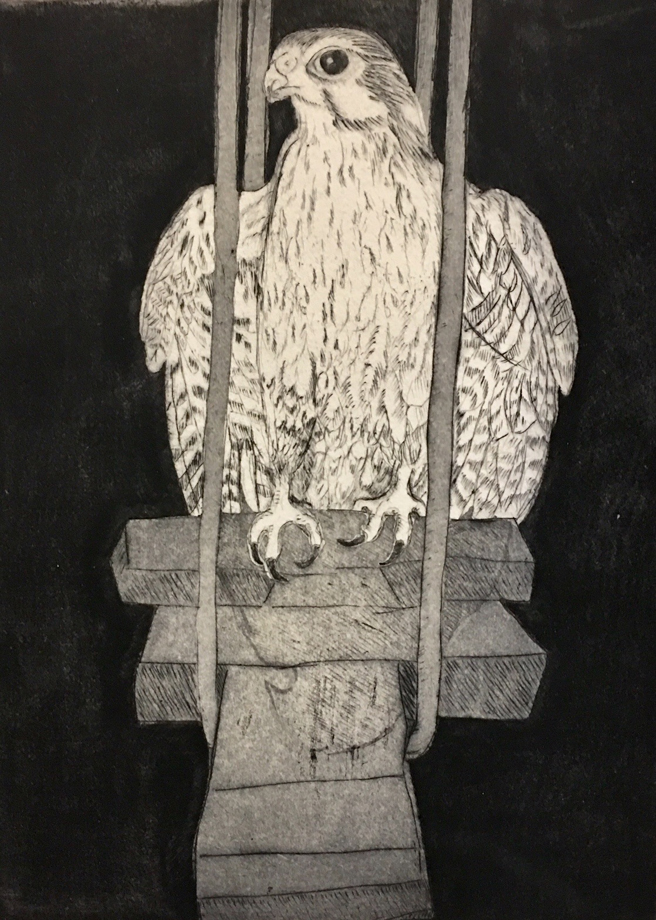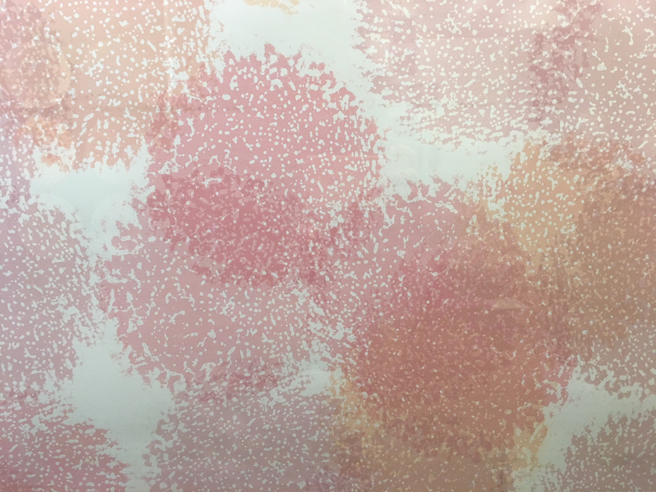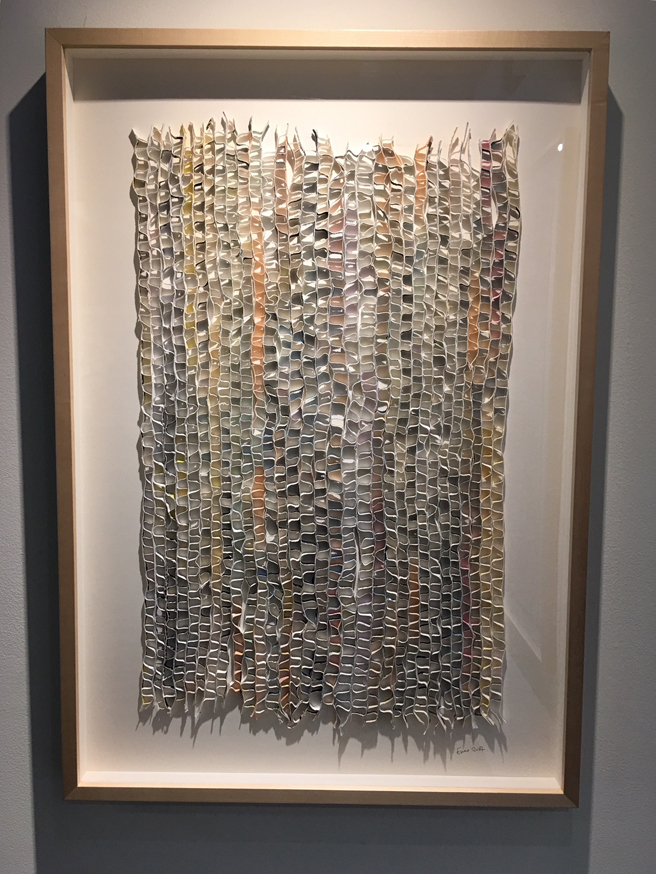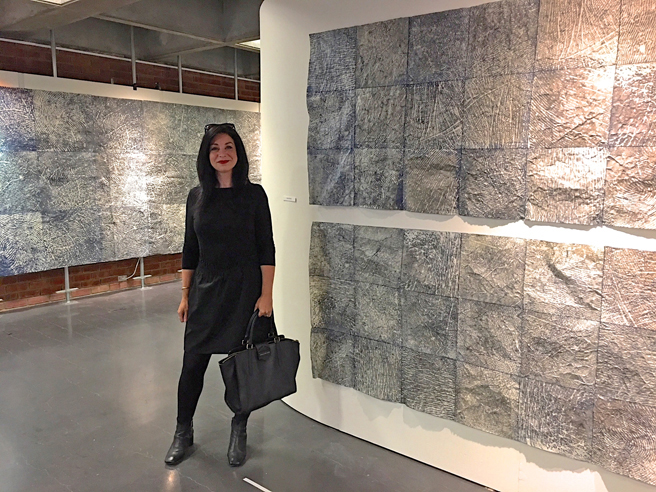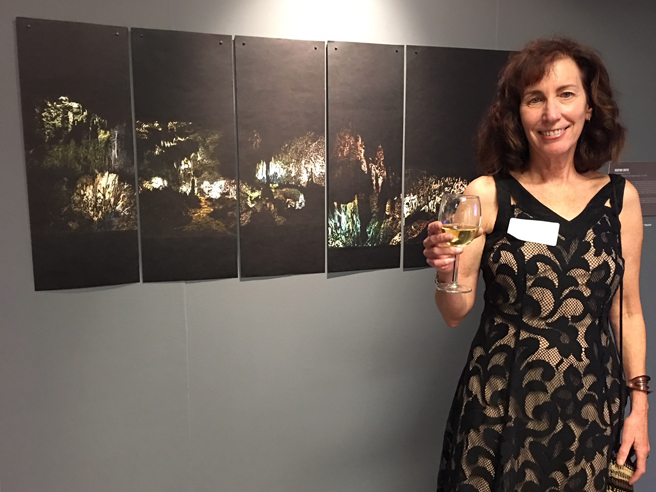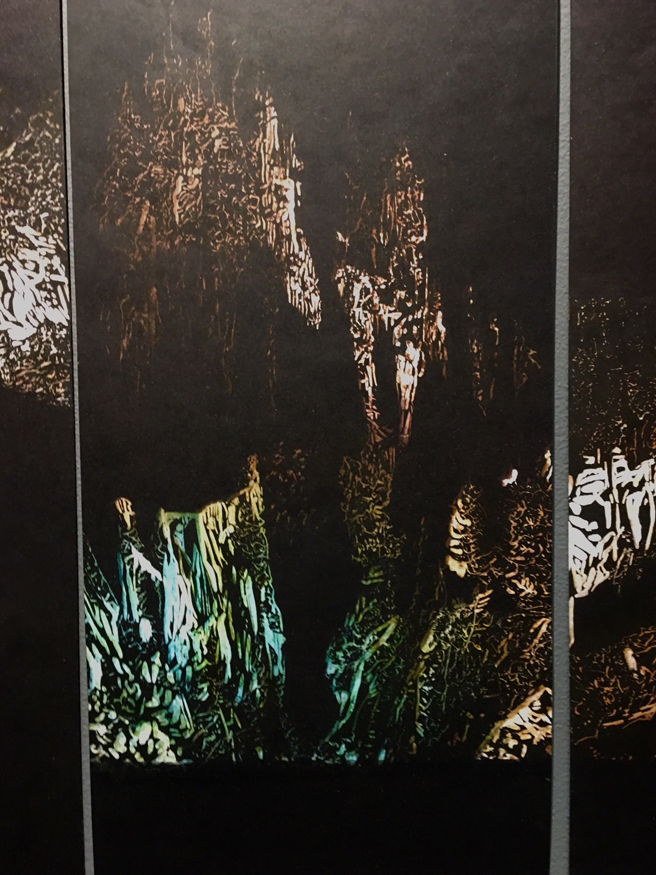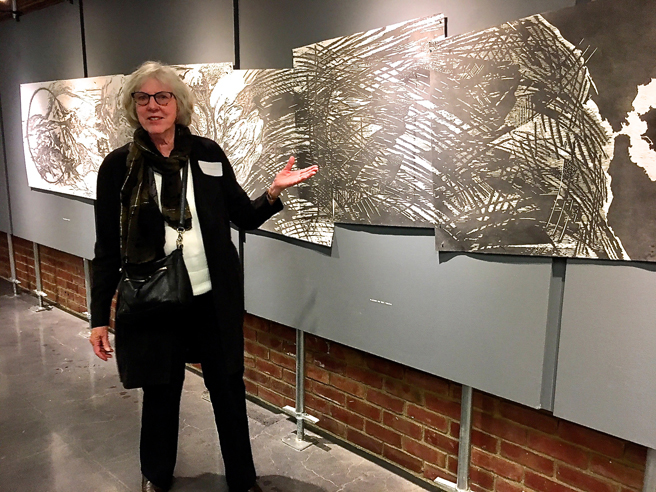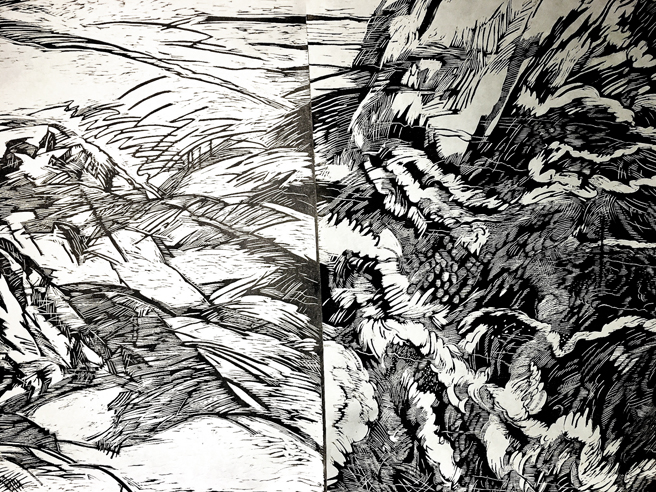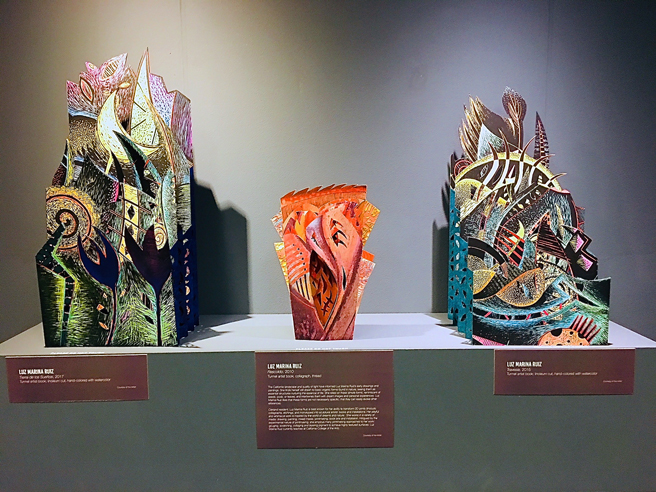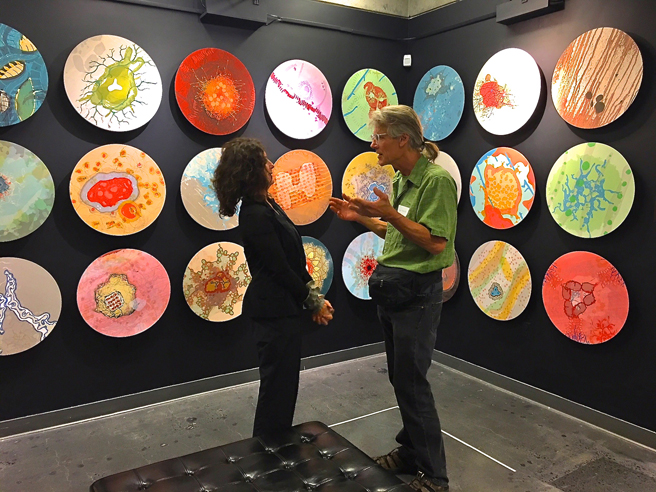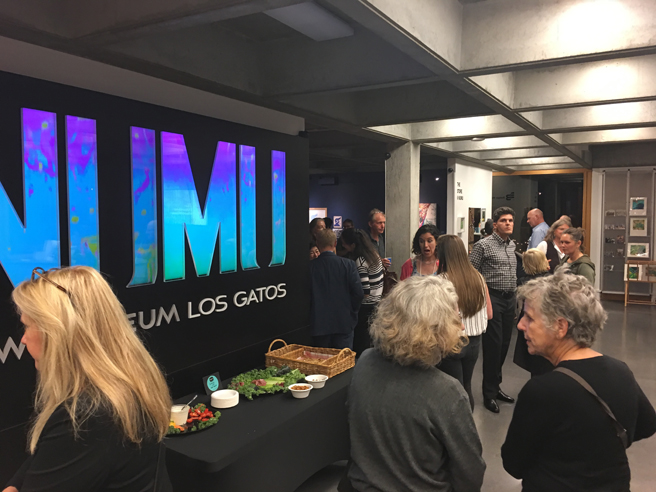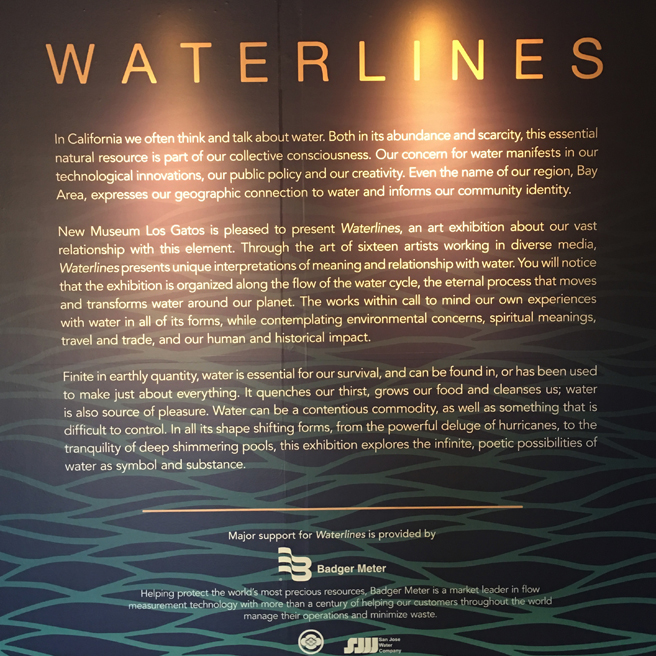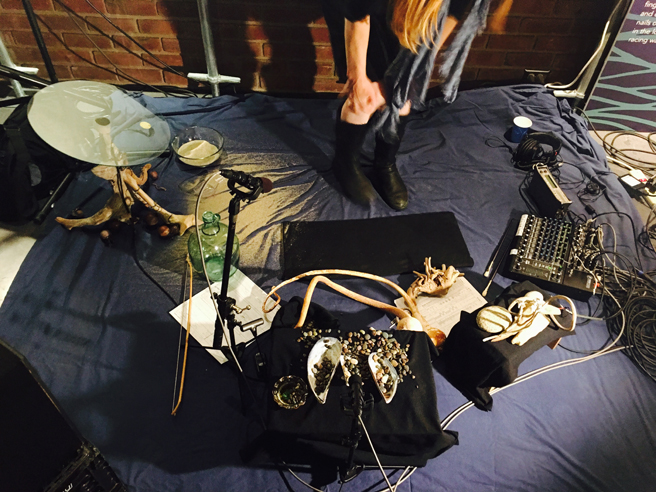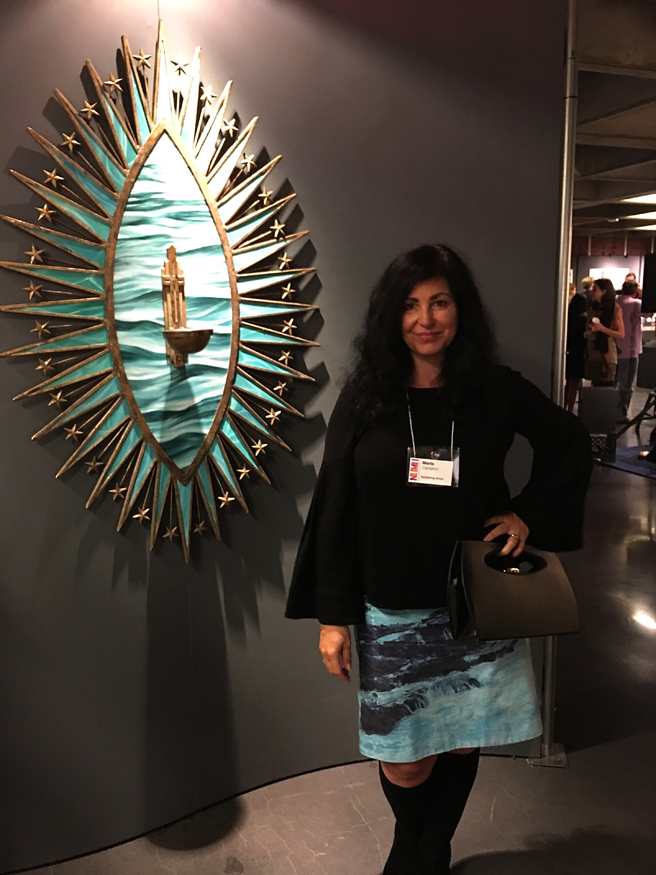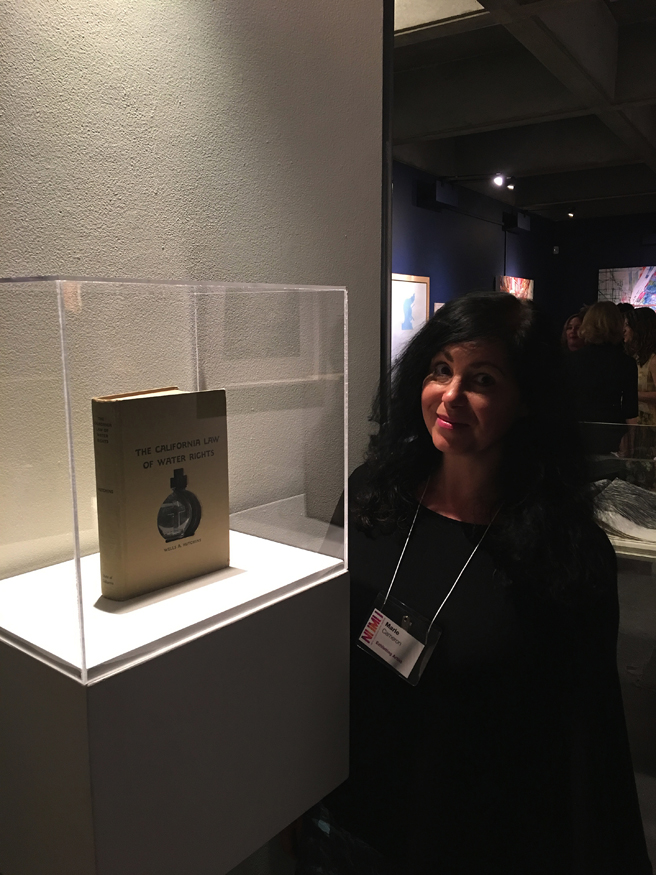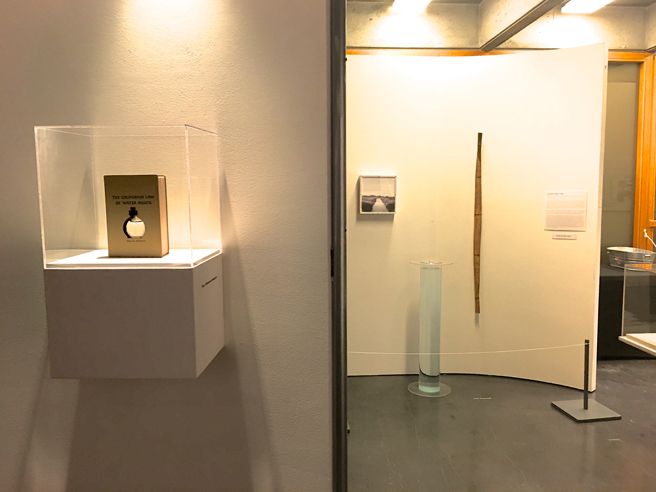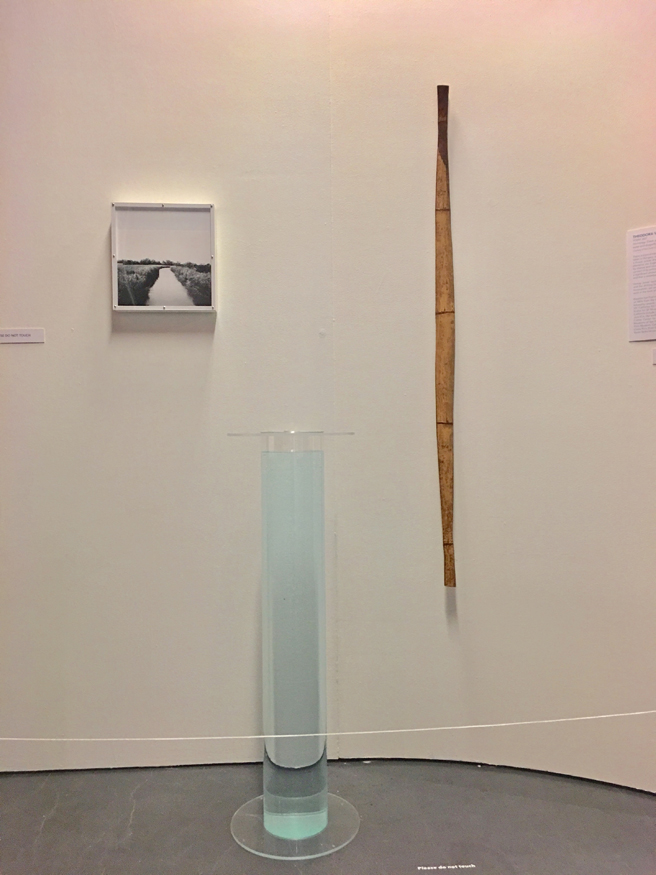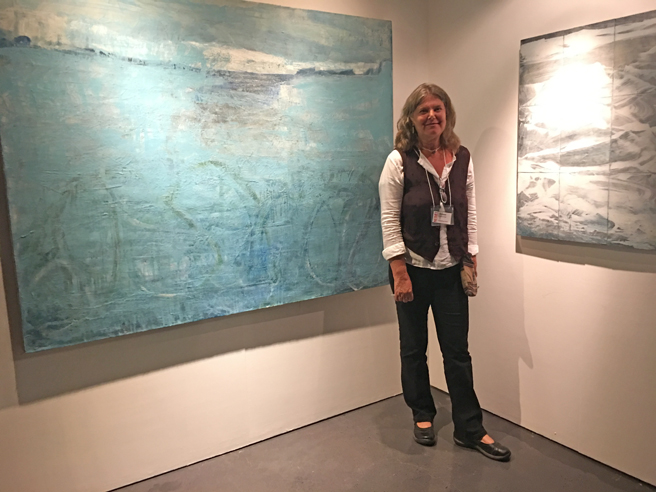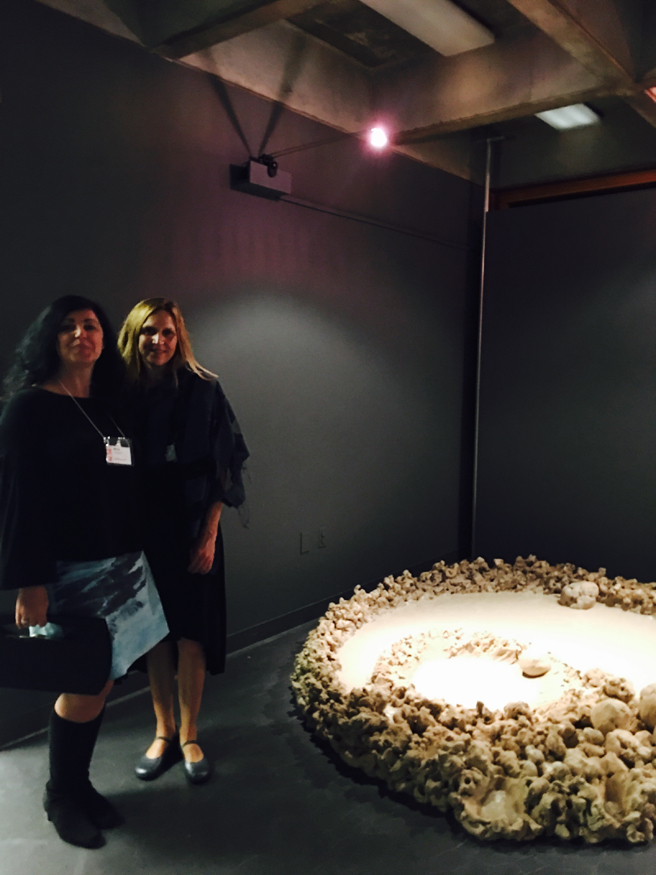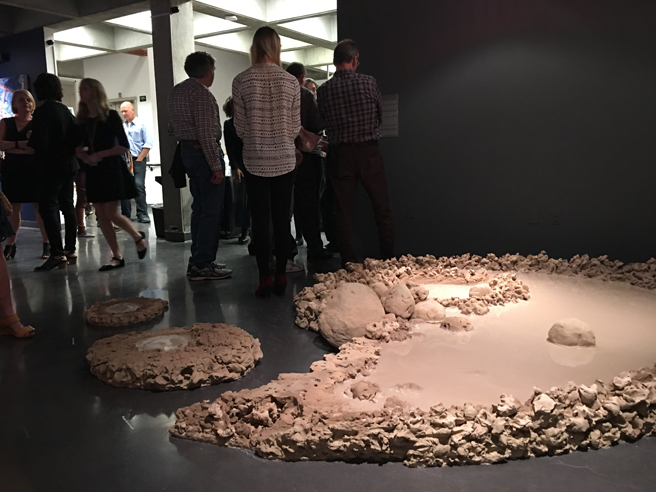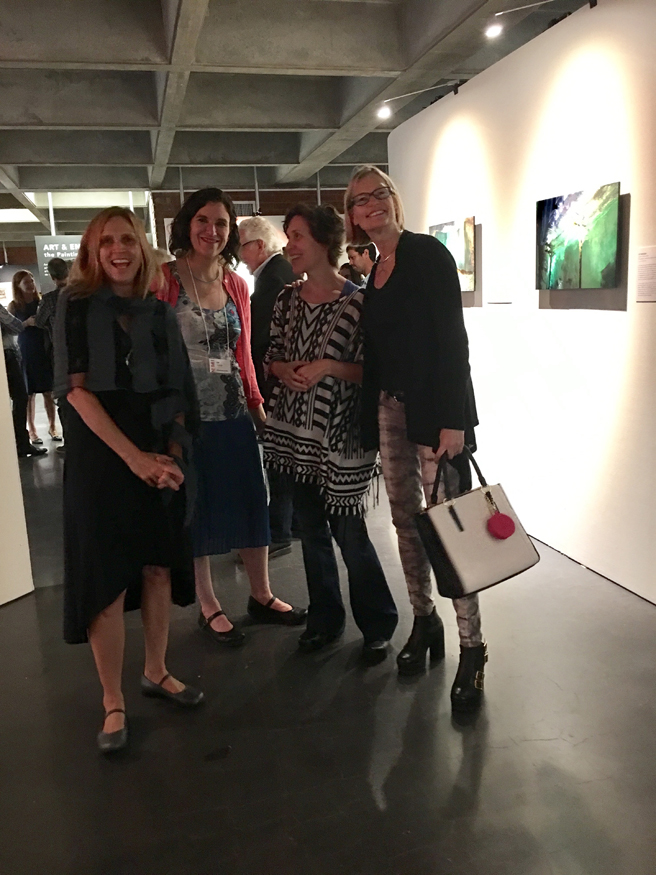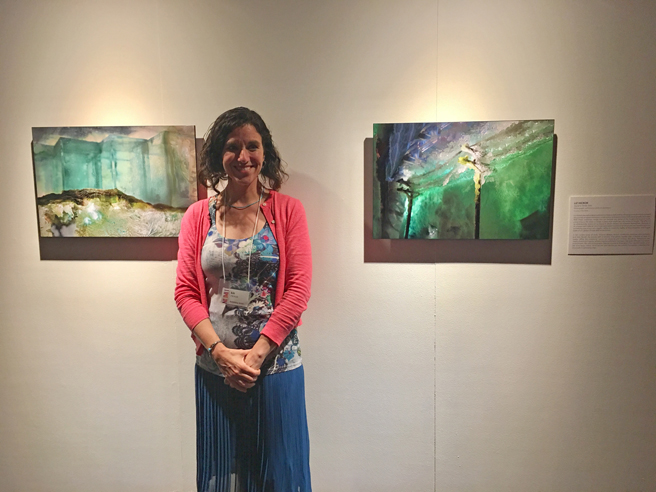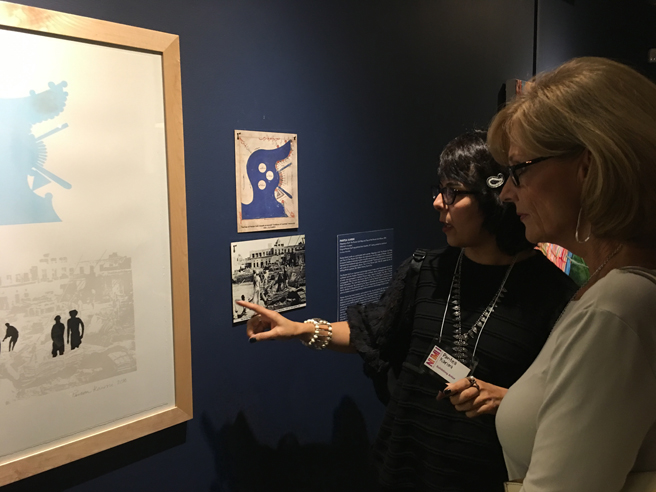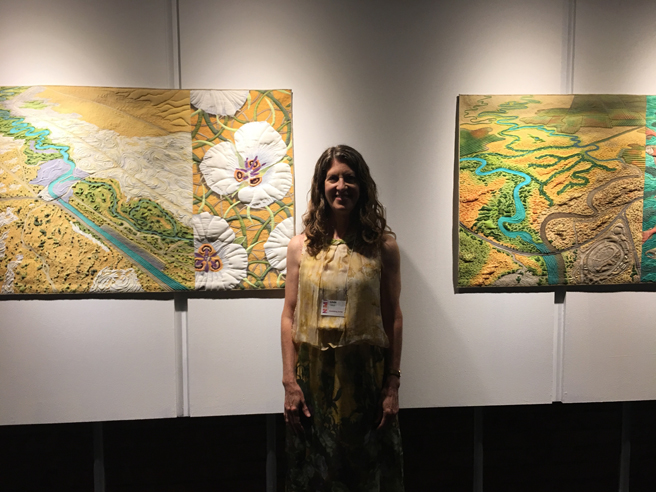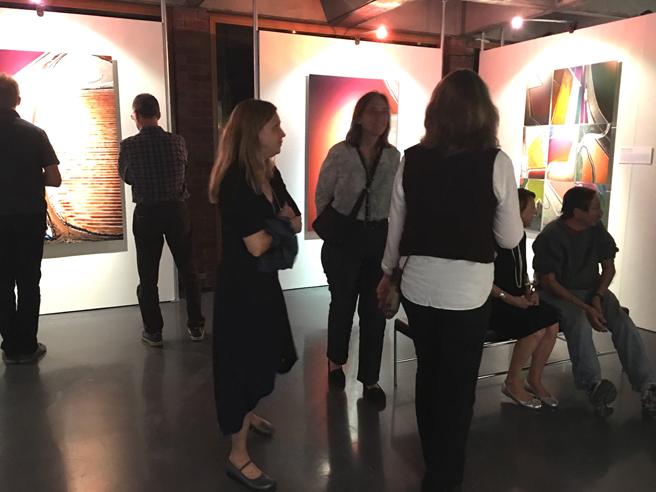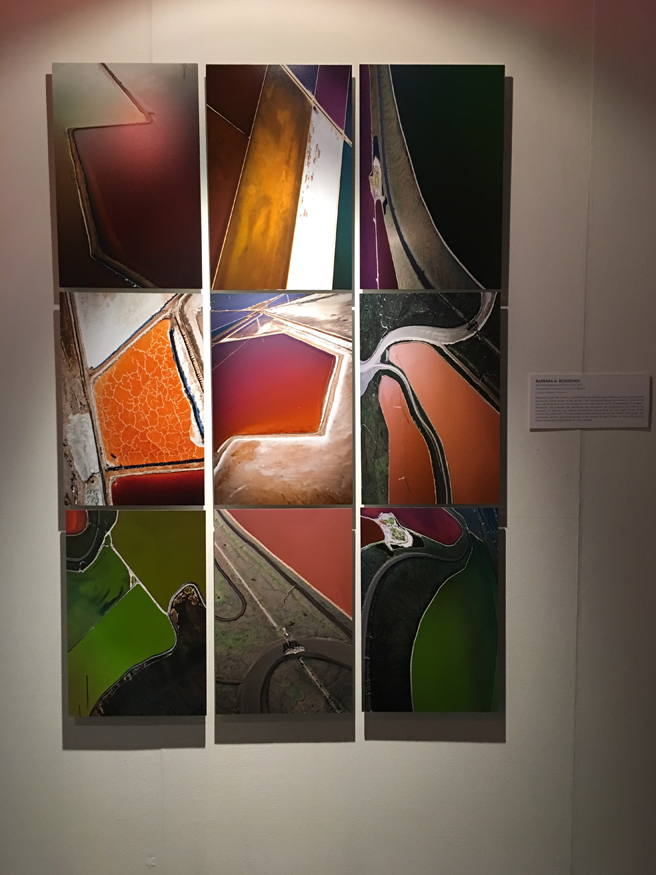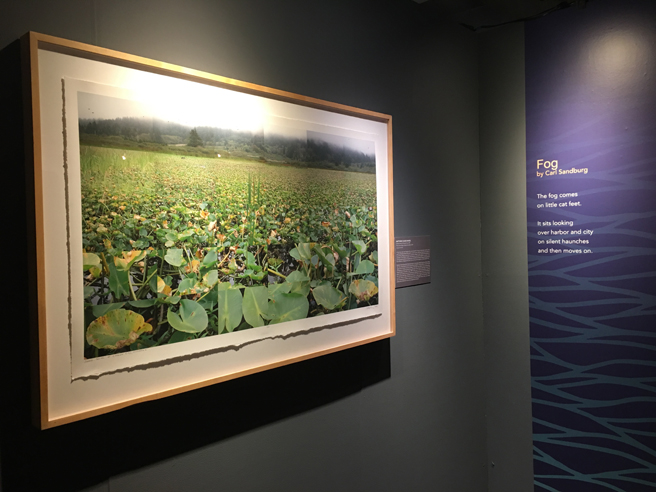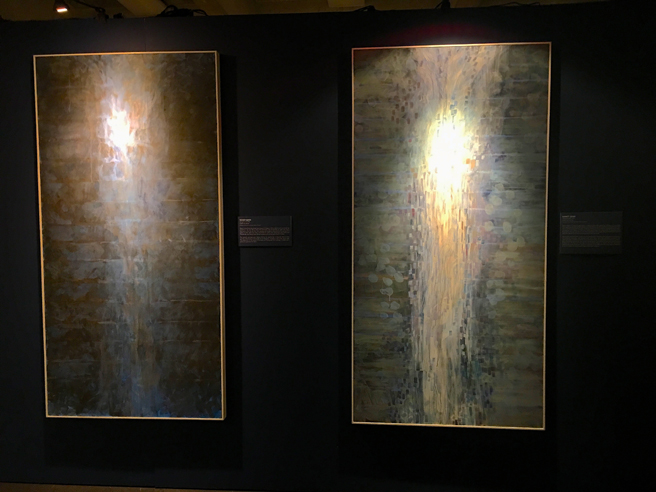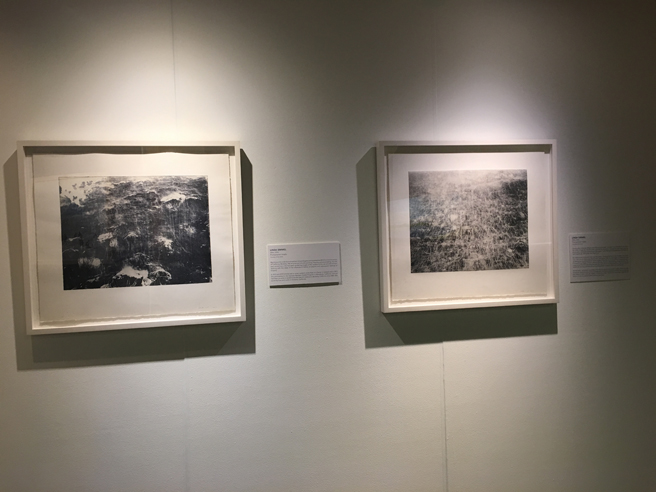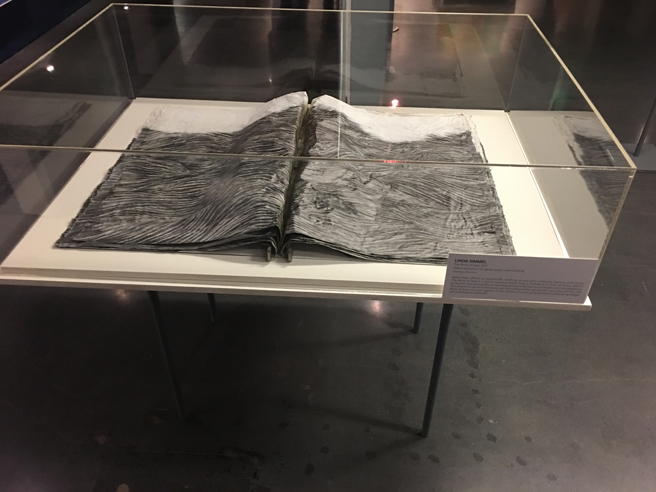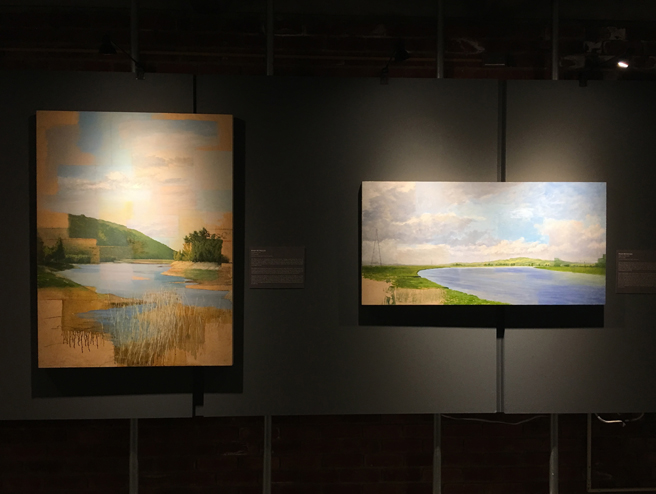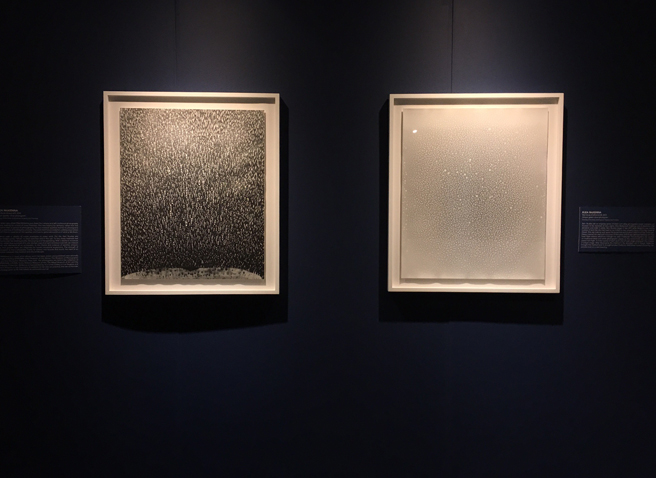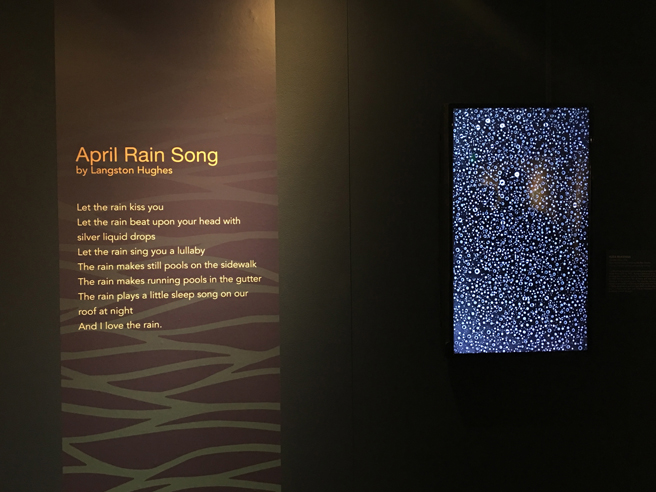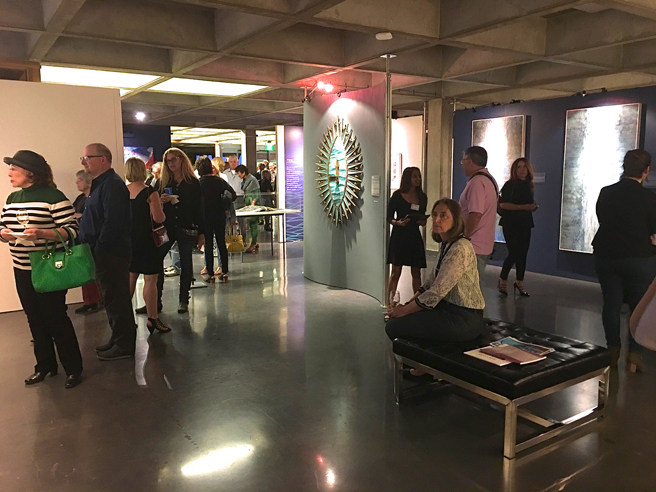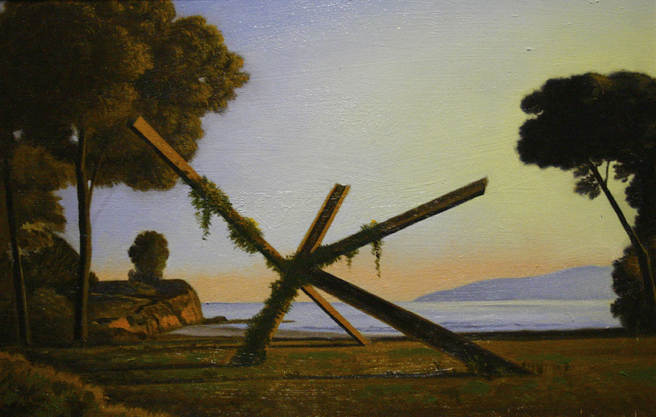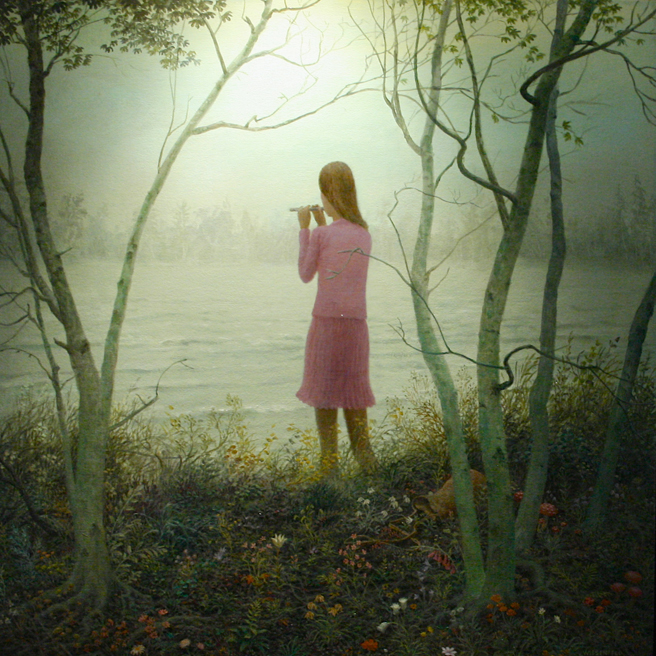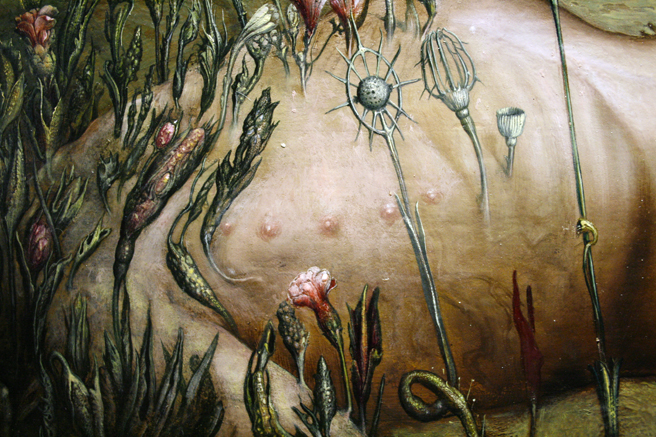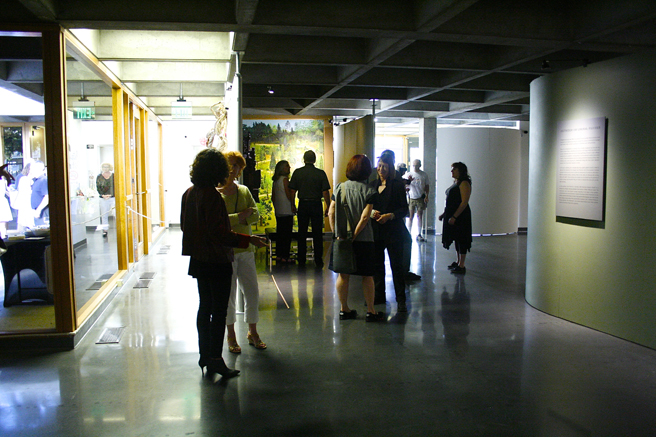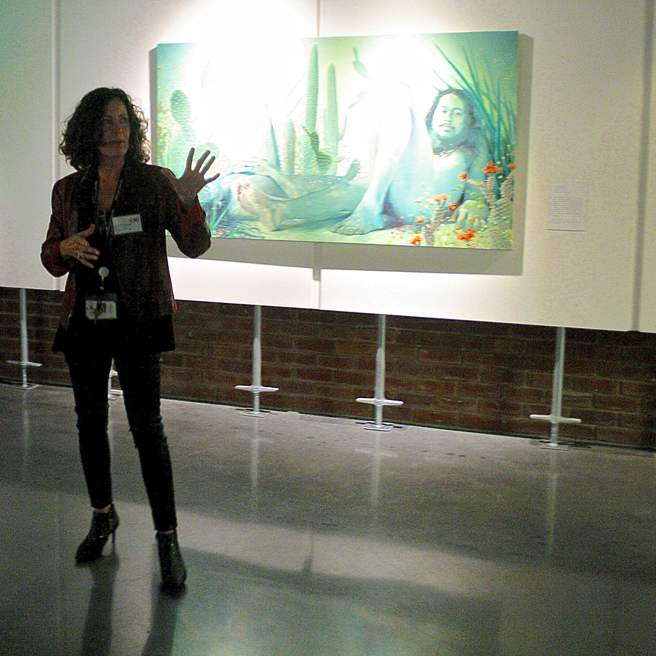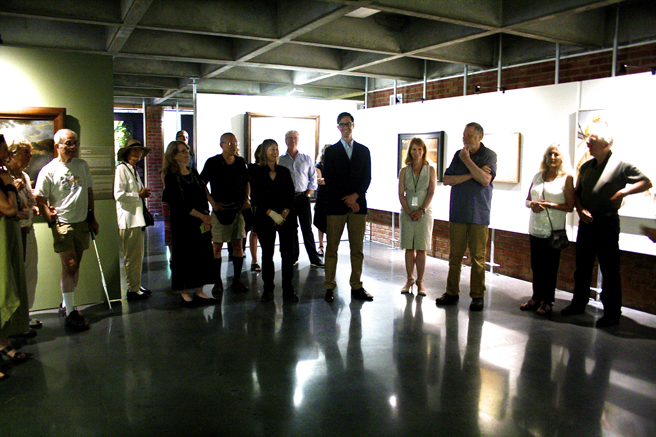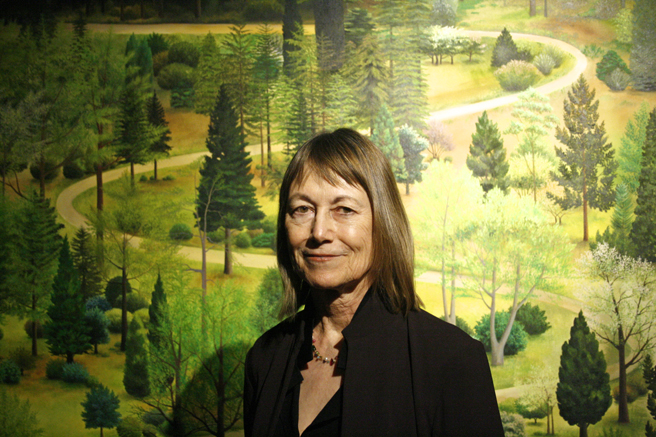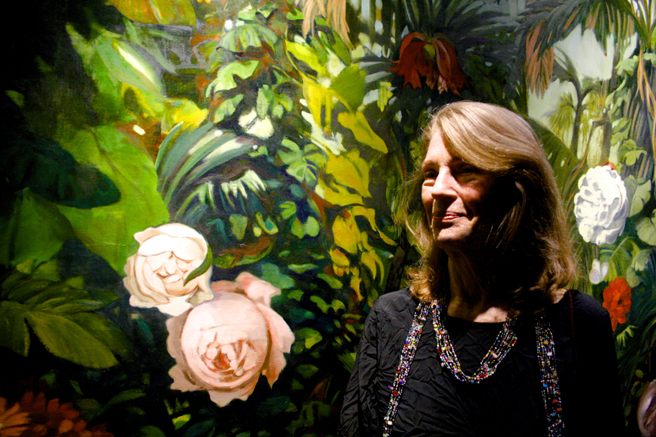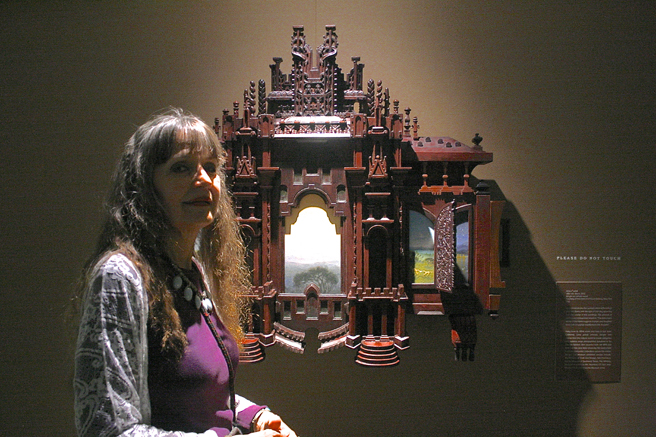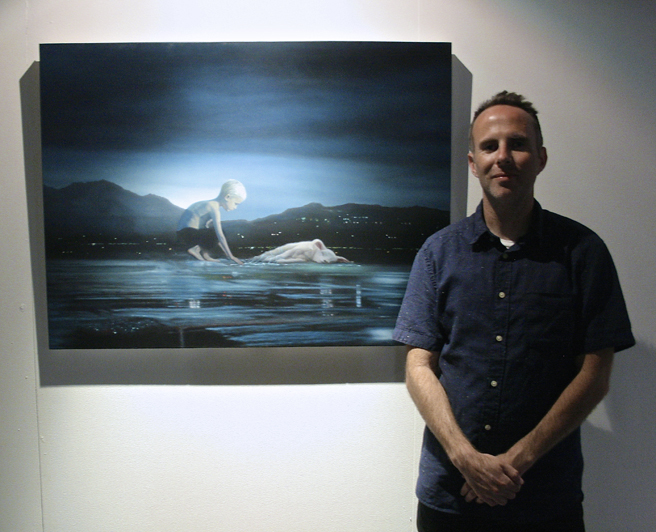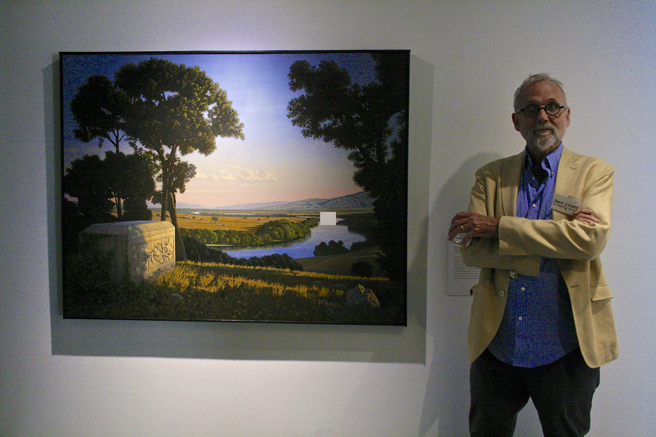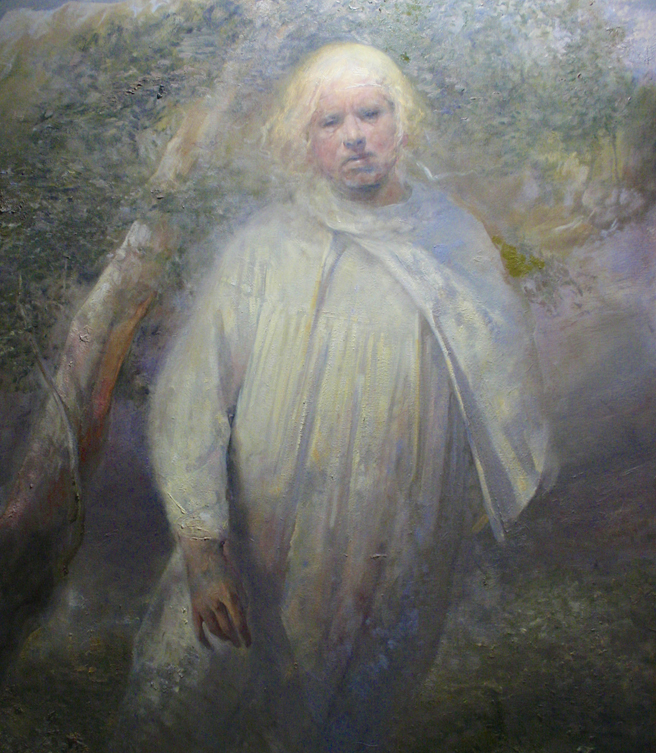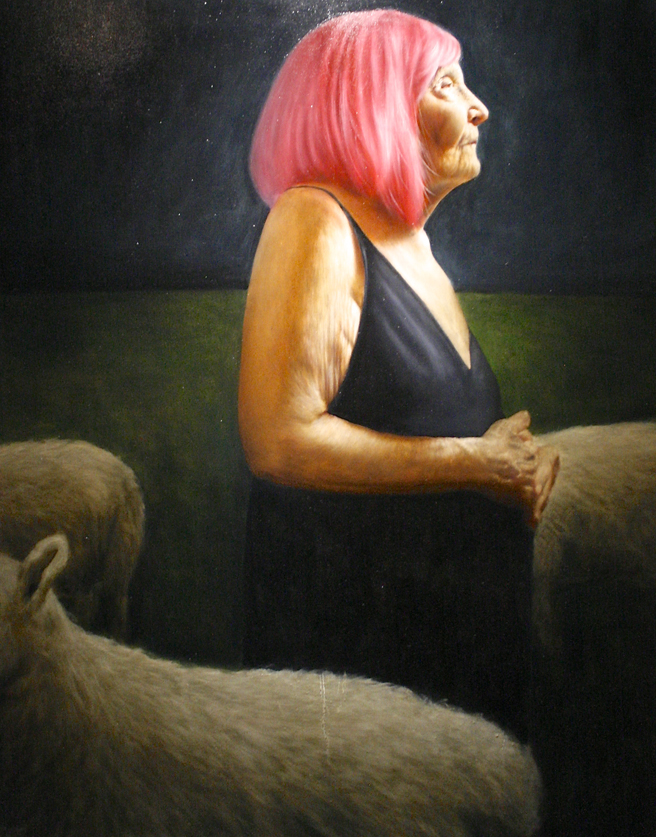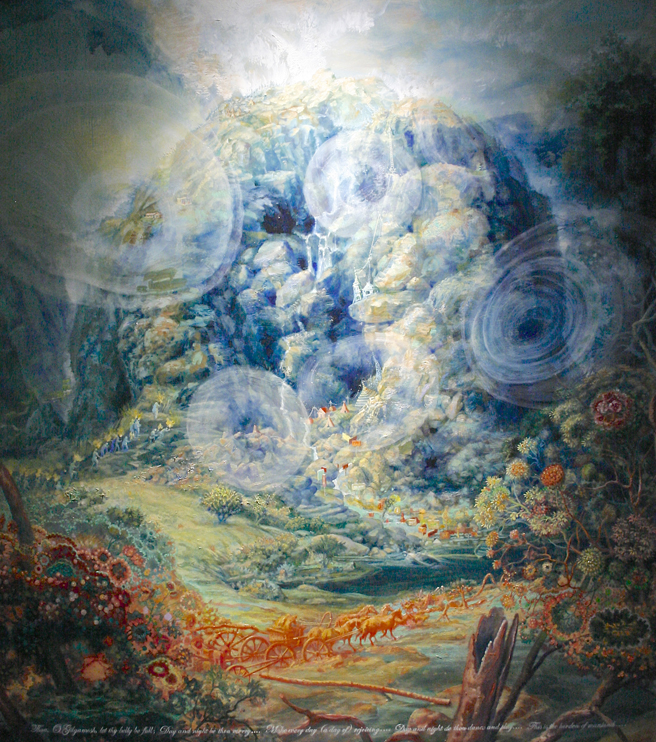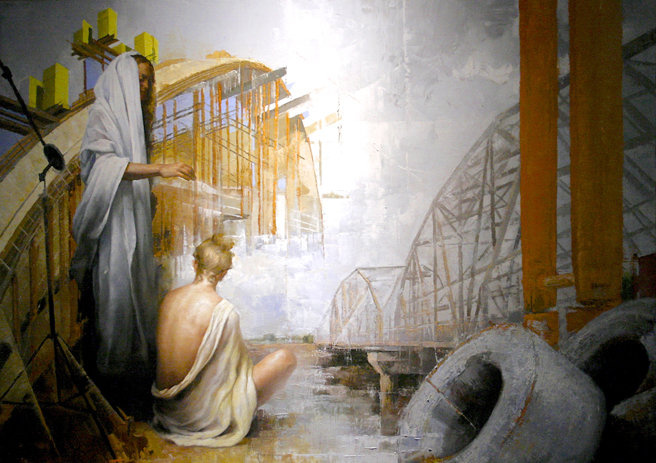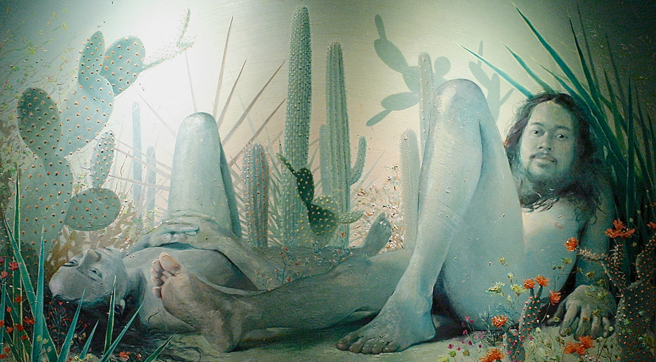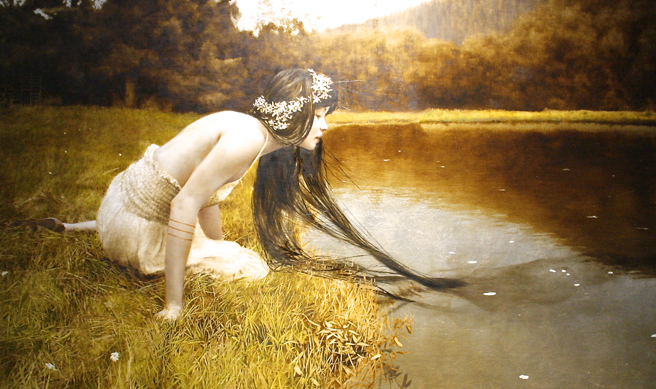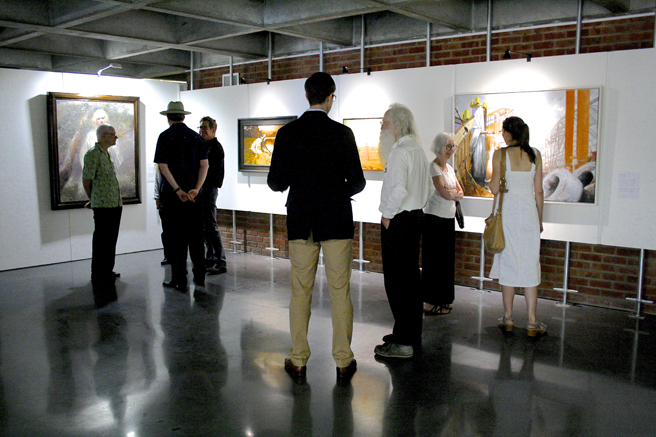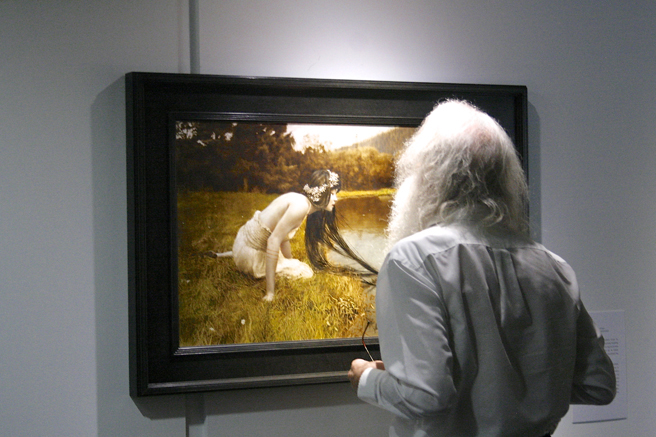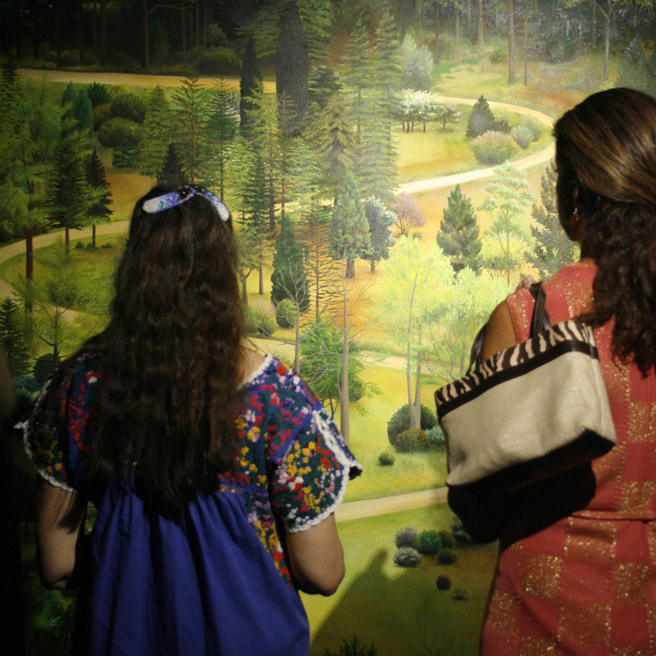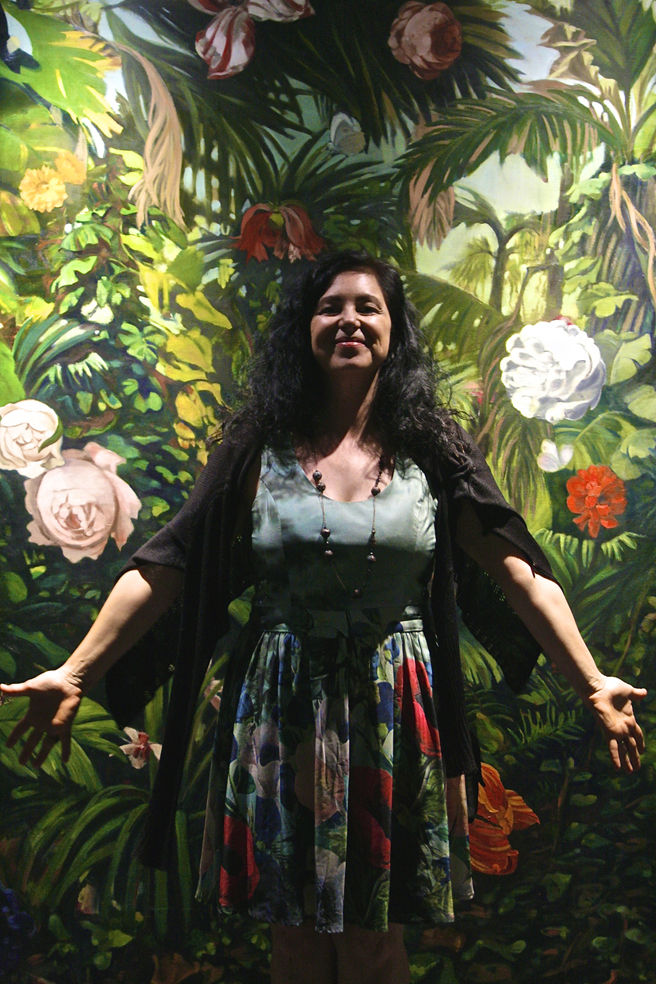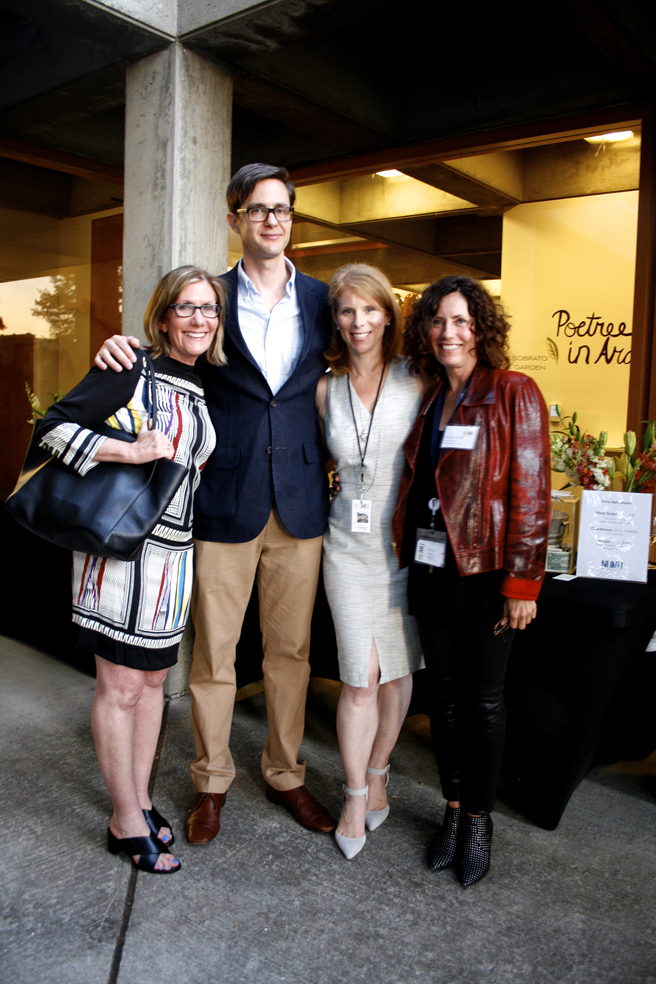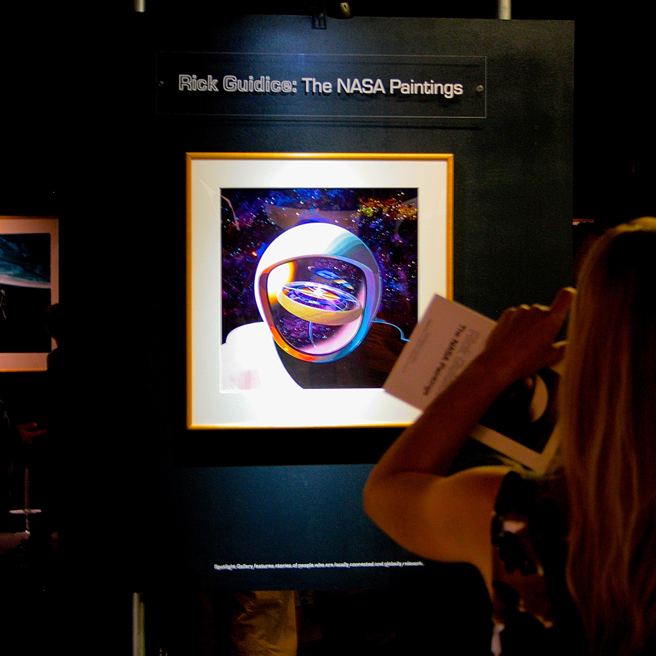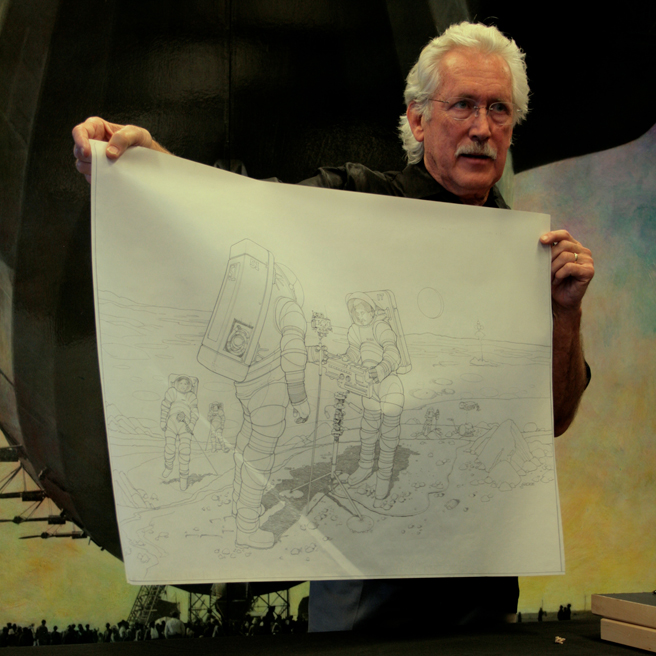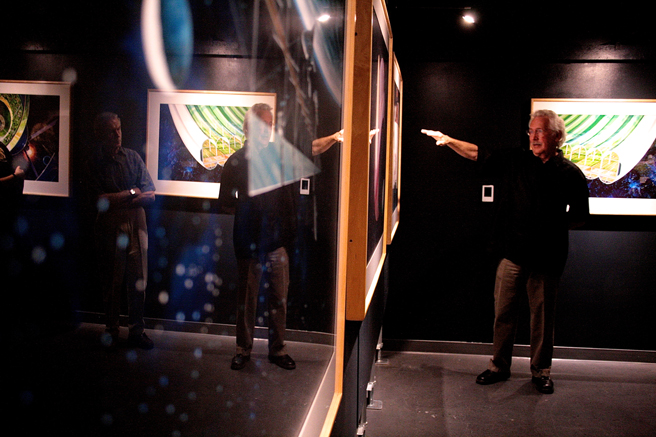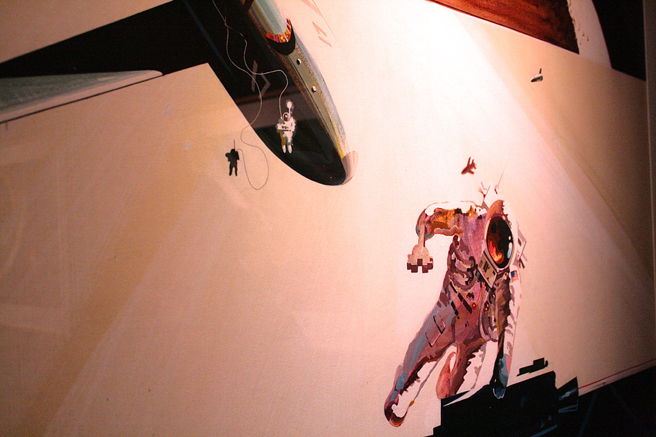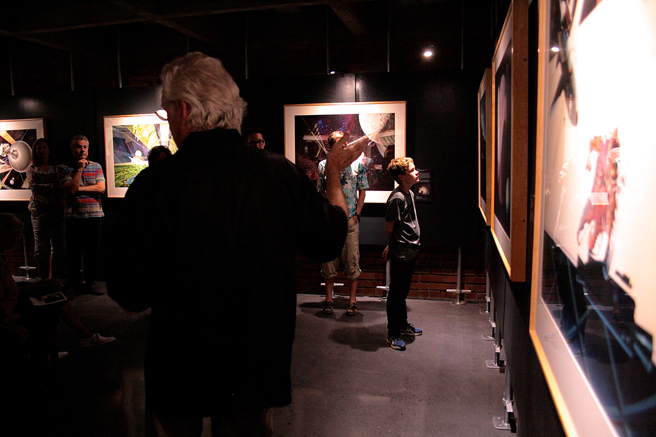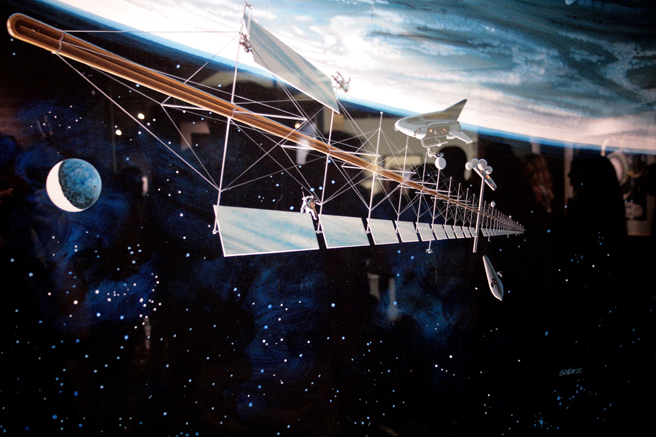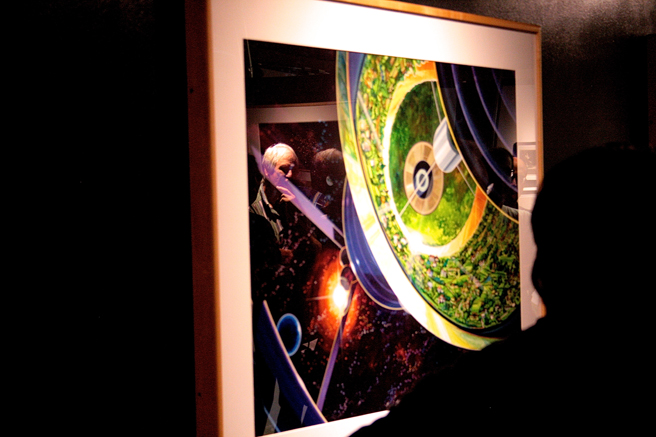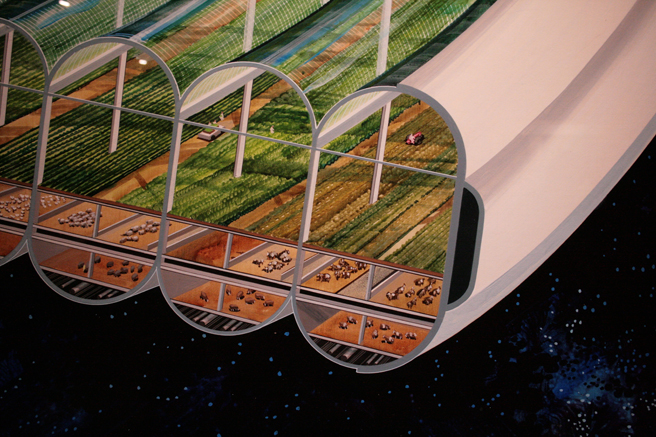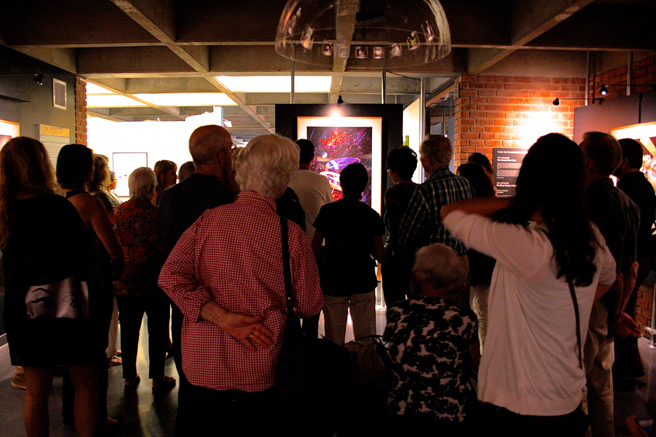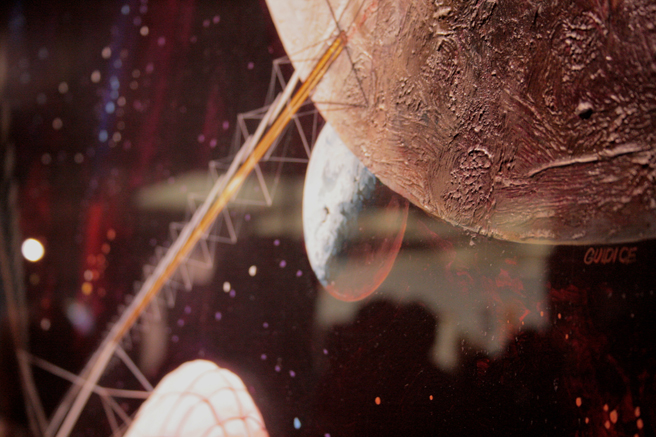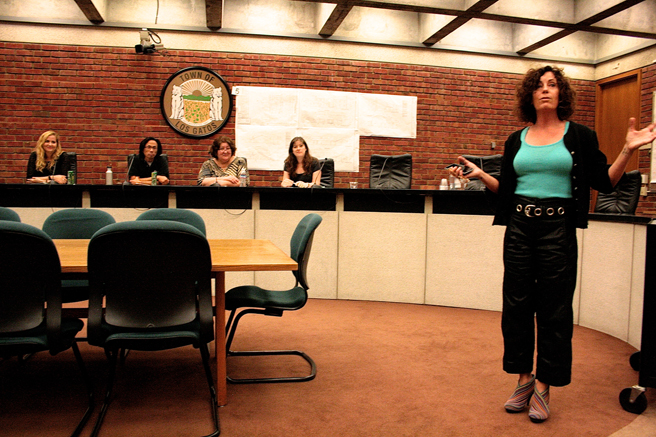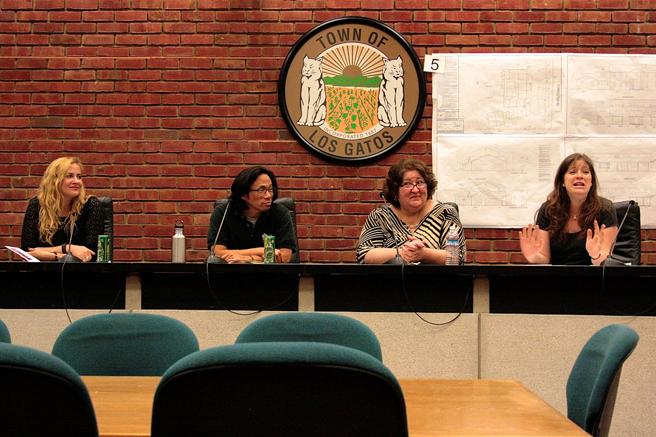Portraits are so contentious! John Singer Sargent, arguably one of the very best portrait painters, is known to have said, “Every time I paint a portrait, I lose a friend.” No wonder there is still such controversy over the Obama portraits at the Smithsonian National Portrait Gallery! These groundbreaking figures, the very first African American family in the White House are beloved to so many and thanks to the wellspring of fantastic photographs over their eight years in highest office of the land, many of us feel that we know them quite intimately and have emotional responses to how they should or should not be portrayed.
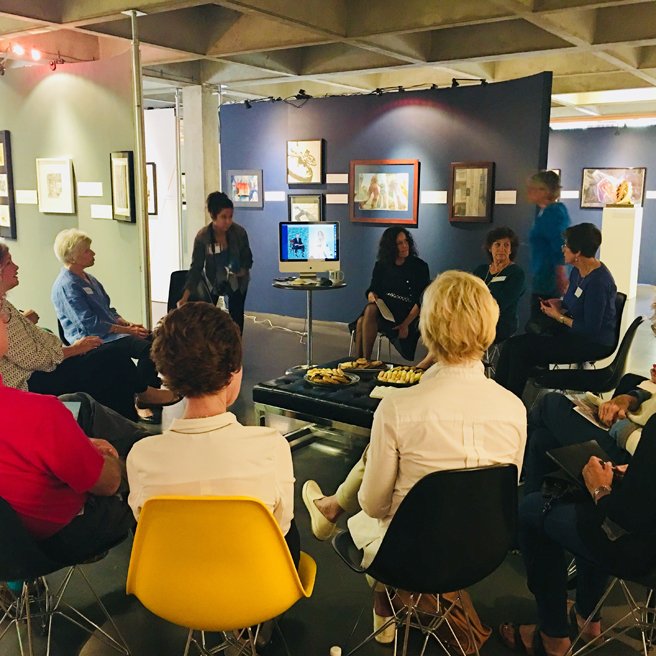
Artists, writers, collectors and art supporters gathered at NUMU’s Coffee Tawk, yesterday to ponder what could have been a scene out of SNL, with Mike Meyers, “The Obama Portraits are neither the Obamas or portraits…tawk amongst yourselves….”
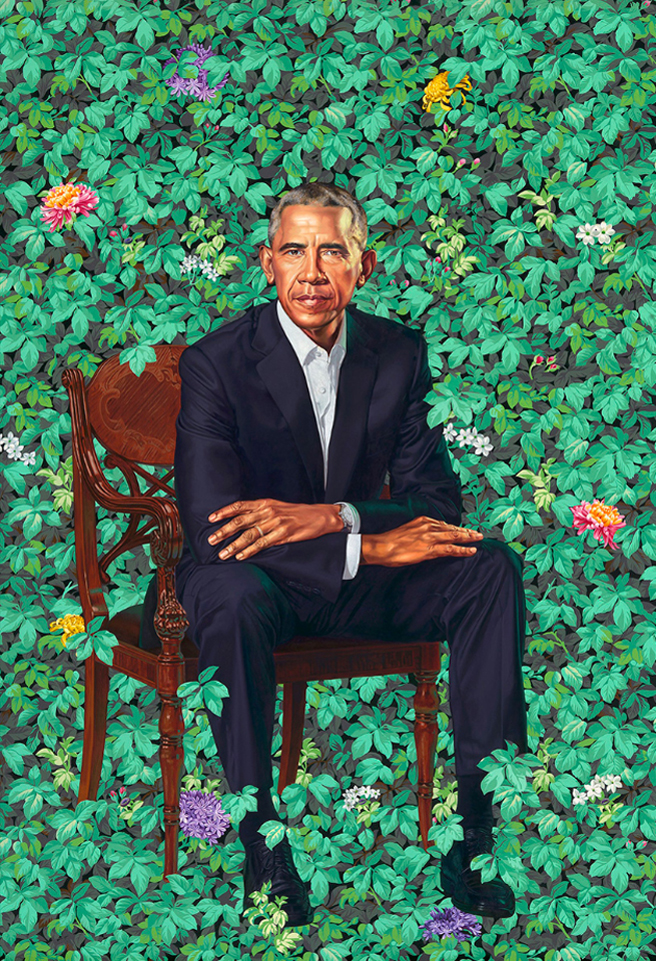
President Barack Obama by Kehinde Wiley – oil on canvas 2018
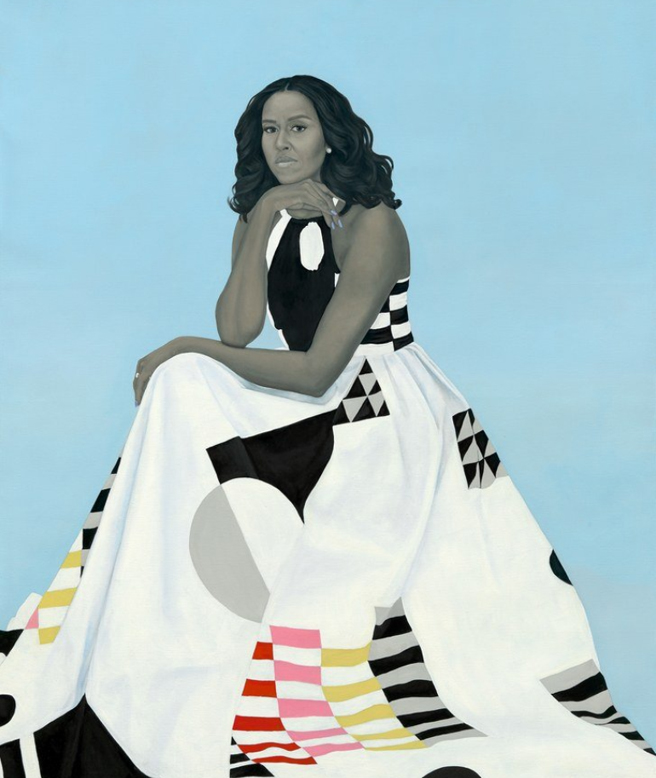
First Lady Michelle Obama by Amy Sherald, Oil on Linen, 2018
So, I’ll let you in on my personal opinion….. I am thrilled with these portraits! In keeping with their time in office these portraits are like a breath of fresh contemporary air in the stodgy world of official portraiture. Real art, imbued with fascinating symbolism and technique and radiating a distinctive voice! Even more importantly, the Obamas both chose brilliant African American artists who consciously challenge the ways that African Americans have traditionally been presented!
In Kehinde Wiley’s hyper-realistic painting of Barack Obama, he has set the president against an encroaching backdrop of greenery flowering with blooms that symbolize his roots, the African blue lilies from his father’s birthplace of Kenya, the jasmine from his Hawaiian birthplace, the chrysanthemums from his town of Chicago where he had met his wife and worked as a community organizer, civil rights attorney and later represented the 13 district in the Illinois senate. This is typical in Wiley’s work, strong, contemporary African American subjects dynamically set against dramatic flora or pattern laden with symbolism, often in poses taken straight out of the pages of art history!
Amy Sherald’s heavily stylized portrait of Michelle Obama exemplifies her work. Her subjects are presented in a greyscale wearing colorful, often patterned clothing and set against a simple, colored backdrop, which carefully isolates the direct gaze of the subject. Traditionally, classic oil paintings begin with a grisaille underpainting, in shades of grey to better control values in achieving a three dimensional effect before adding transparent washes of color. At one point Sherald decided she preferred the contrast of the grey skin against the colored backdrop and outfits. Perhaps it was simply an aesthetic choice, perhaps it came out of the agency that early photography brought to African Americans in how they chose to portray themselves that resonated with her. The dress that Michelle Obama is wearing, by American designer, Michelle Smith of Milly, is in keeping with the subject’s support of American designers, the within-reach, if somewhat aspirational couture she chose as First Lady but more importantly, this dress contains references to the Gee’s Bend quilts, designs passed down from generations of African American women, some of which encoded Underground Railway information – all while still feeling fresh and modern and as elevated as a Mondrian!
Wiley and Sherald both employ unique approaches to African American portraiture that help us see African Americans in a new way. I cannot underscore enough how important it is that this vision have such a prominent place on the national stage. I would expect nothing less from the Obamas to personally chose these artists to represent them in this vital way.
Having said my piece, I will share some of the questions and concerns that were brought up at Coffee Tawk….
What is the artist selection process for official presidential portraits? What is the criteria? Can the artist’s race, gender, religion be a bonafide criteria? Who makes the selection? Who pays? Should a portrait be a photographic likeness or an artistic interpretation? How will these portraits be seen in the course of history?
Interesting! Also very interesting is how disappointed some people felt that the portraits didn’t look enough like the Obamas, that some aspect of their personality was missing, like their warmth. One person felt Barack looked slouchy and undignified, another thought he looked as though he was leaning forward to listen. One person missed Michelle’s smile, another thought she looked queen-like in the her golden triangle orientation.
People also spoke about their experiences in commissioning portraits, disappointments in not getting a faithful likeness and adventures in abstract representations! Speaking from the artist’s side of the commissioning process, I typically turn down requests of portraiture, especially memorial portraits, counseling the hopeful, potential client that paintings are great if you are looking at an artistic rendition that might (if we’re lucky) capture some sliver of the spirit of that person, but paintings are not a substitute for photography or memory and that people are great at recognizing faces….and experts in the faces they love, so any little thing that is off can be quite creepy and disappointing (“A portrait is something wrong with the mouth.” – Sargent, again!), the whole venture is quite a gamble and SO much work! All that’s riding on getting a portrait “right” can turn the painting into something very stiff and awkward. Now I will only a portrait for it’s own sake, not as a commission. This frees me up to paint how I like (without the feeling of someone looking over my shoulder.) It is very rewarding if subject or their family is interested in the painting after it’s done but I can’t be worried about that while I work. Painters are not magicians or mind readers and their work can’t be all things to all people.
I guess my advice to those who are interested in commissioning a portrait is to do your research! Pick an artist whose style you love, who has a solid record of painting portraits in particular. You will be getting their interpretation of you or your loved one, not a facsimile!
Finally, in addition to the links above, I’m including some links to interesting articles and interviews about the artists and the Obama portraits. Please feel free to chime in with thoughts about the portraits!
Oh…. the next Coffee Talk at NUMU with Director, Lisa Coscino is set for April 26, 2-3pm the topic (as I understand it) will be about censorship – questions about how and if we re-evaluate the work of artists who have been found to have been discredited in other aspects of their life, questions about the propriety/ necessity of removing controversial statues from public spaces …. it’s broad and wide raging and controversial. Bring your opinions and coffee – NUMU provides the venue and the sweets!
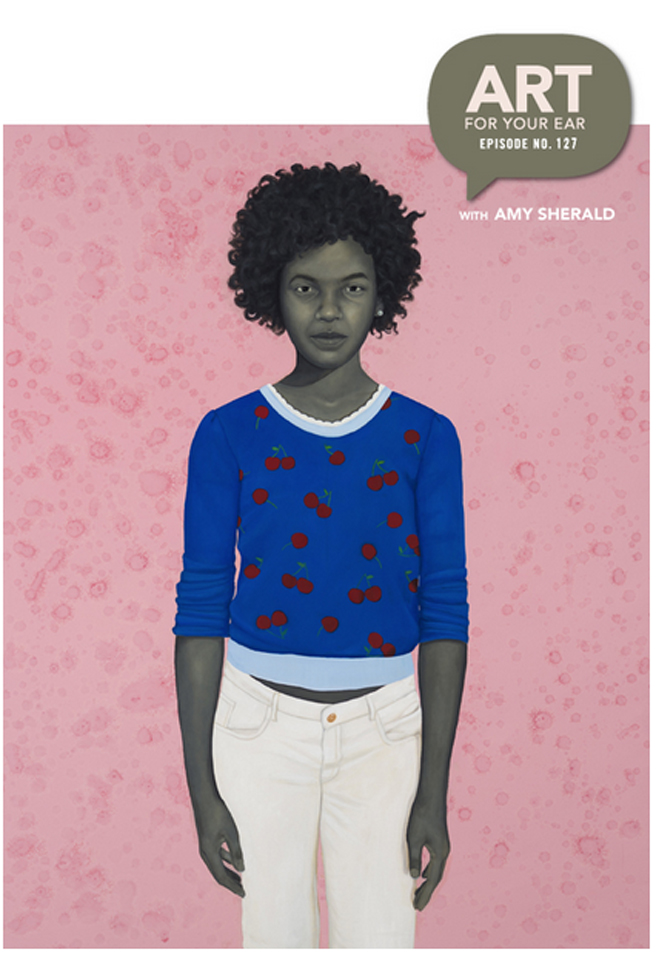
The Jealous Curator’s Art For Your Ear podcast interview with Amy Sherald.
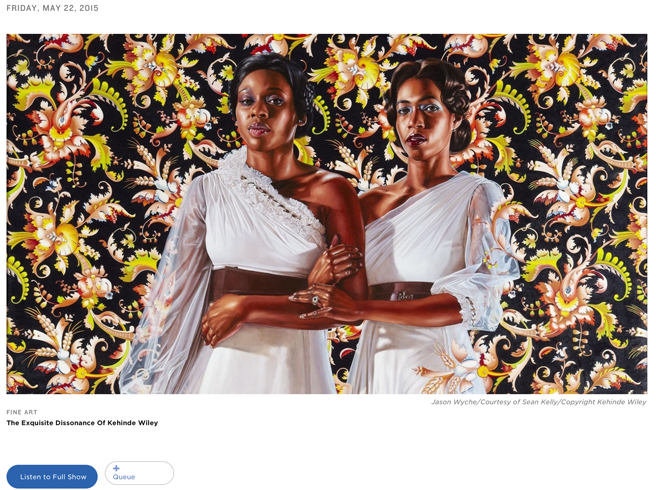
NPR’s All Things Considered 2015 interview with Kehinde Wiley.
http://npg.si.edu/blog/looking-amy-sheralds-portrait-michelle-obama
http://www.baltimoresun.com/features/baltimore-insider-blog/bs-fe-little-girl-parker-curry-amy-sherald-michelle-obama-portrait-viral-20180305-htmlstory.html


